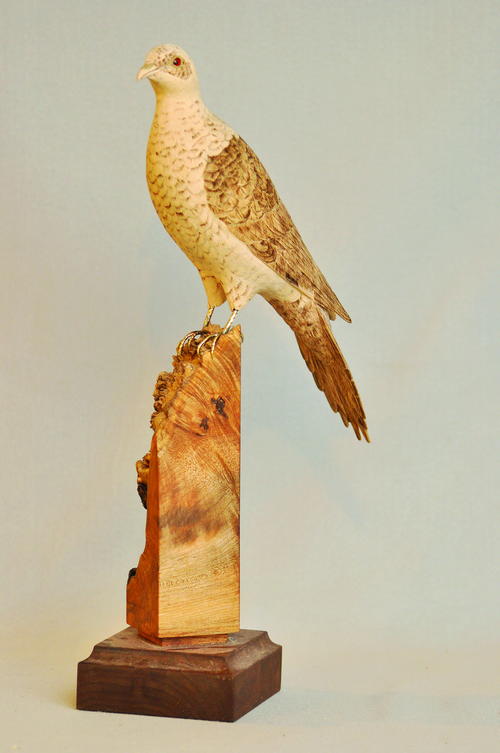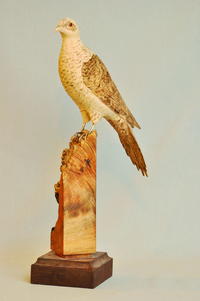Out of the Past, Part One
The passenger pigeon

The pigeon has been carved and textured. Painting comes next.
Imagine a flock of birds a mile wide and 200 to 300 miles long, a gathering so large it takes 18 hours to fly past a single point. That was what it was like back in the days before the passenger pigeon became extinct. Some estimates put the number of passenger pigeons in North America at three to five billion birds, and their flocks were estimated to be one of the largest gatherings of any animal on earth.
Passenger pigeons were a very social bird with hundreds of nests in a single tree. This social aspect may have been one of many factors leading to their demise. Market hunters, aided by the telegraph and the railroads, could easily track down the huge flocks and systematically slaughter the birds. The last captive passenger pigeon died in the Cincinnati Zoo on September 14, 1914.
I became interested in this bird when teaching school in Pigeon, Michigan, a small town named after the numerous passenger pigeons once found there. Carving an extinct bird does present some unique challenges, especially when it comes to reference material. For me, the acquisition of references and data on the bird I plan to carve is as much fun as the actual carving. The Internet is a great source of information, but actually seeing and measuring study skins is a huge advantage.
I spent a day at the University of Michigan's School of Zoology, where I measured and photographed six birds. The mounts were of varying quality, but considering they were more than 100 years old, the colors were still in remarkably good condition.
I hope this carving will encourage people to reflect a bit on how rapidly mankind can decimate a species.
This article deals primarily with the sequential steps in completing the carving, and not with the how-to functions and descriptions. I have made the assumption that your skill level will allow you to produce something similar.
This article is from the Fall 2011 issue. For more information on our issues, check out our issues page.
Read NextEastern Bluebird, Part One



